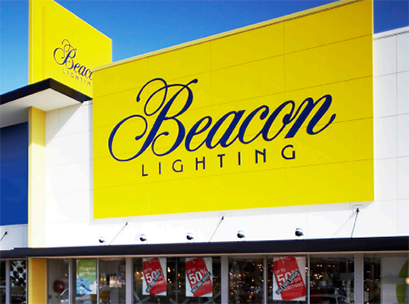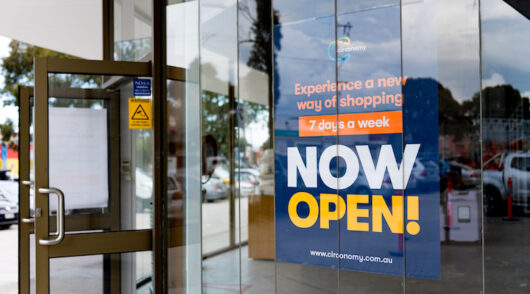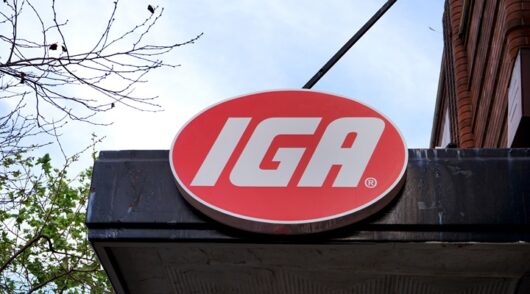![]() Beacon Lighting chairman Ian Robinson has not been impressed by Amazon’s local launch, saying that the e-commerce giant’s “very poor” lighting category has had little impact on the sector so far.
Beacon Lighting chairman Ian Robinson has not been impressed by Amazon’s local launch, saying that the e-commerce giant’s “very poor” lighting category has had little impact on the sector so far.
Speaking to shareholders and analysts after reporting record half-year sales and profits, Robinson said he was disappointed by the launch.
“[Amazon] has been slow out of the blocks…the impact on the sector has been very, very minor,” he said.
“You would have to say it’s quite disappointing in regard to what the expectations were going to be…we check out the category regularly and it’s a very poor offer so far.”
Beacon was one of the first national retail brands to sign on to Amazon’s local marketplace, having maintained a presence on its platform in Europe for several years.
Chief executive Glen Robinson stressed that it was “early days” for Amazon Down Under, but that ultimately Beacon saw the marketplace as just “another channel to sell on”.
“If customers want to buy our product through that channel, that’s fine,” he said, after reporting a 45.9 per cent increase in online sales for the half.
Beacon unveiled a 19.6 per cent in first-half net profit to $122.3 million on Thursday morning on the back of a 23.4 per cent increase in earnings before interest and tax (EBIT) to $16.9 million.
The result was driven by double-digit sales increases across its three key business areas, with retail contributing a 14.2 per cent increase in top-line sales and a 1.8 per cent increase in comparable sales.
Comparable sales impacted by cannibalisation
However, an accelerated store roll-out, which has seen 15 locations opened over the last 19 months as the business looks to capitalise on the hole left by hardware chain Master’s exit – has weighed on comparable sales as new sites cannibalised sales from existing ones.
Glen said that comparative sales excluding the impact of cannibalisation were 5.2 per cent, compared to 2.7 per cent in the prior corresponding period (PCP).
“[Store roll-out] has caused some impact on the existing network,” he said. “We believe the decisions that have been made will be good for the longer-term market share of the business.”
Operating expenses as a percentage of sales also increased in the first-half by 1.1 per cent to $62.3 million, impacted by rising occupancy costs associated with the store roll-out and electricity prices.
Management will wind back the store-rollout to a more normalised 6-7 per fiscal year moving forward, as the business works towards its network plan of 146 stores, currently at 108.
Weakness in Western Australia has also weighed on comparable sales, but management said there has been encouraging signs that sales are picking up in the market.
Glen said new stores in the network are, for the most part, performing to management expectations, although added it generally takes about a year for Beacon stores to find their stride from a sales perspective.
“Generally speaking the vast majority of [new] stores are meeting expectations and we’re happy with performance,” Glen said.
Competitive pressures have eased, but consumers not overly excited
Glen said that sales had softened a bit in the first eight weeks of the second-half, but the slower trading was not enough to prompt management to rescind its commitment to generate record revenue and profit for the full-year.
But margins are recovering after a difficult 1H17, where the business was navigating clearance activity driven by the exit of Masters from the market.
“You find yourself running a business where you’re trying to chase your tail all the time with trying to pull in sales forward,” Glen said.
“That’s what we were doing when Masters was exiting…unfortunately we had to push pretty hard to get sales through the door.
“What that does is retrain your customers to thinking they’re always going to get a discount, we found that’s not sustainable,” he continued.
“It’s about building a more sustainable marketing and promotional calendar, not driven just on discounts.
“That’s what we’ve focused on in the first half and we’ll continue to push that through in the second,” he said.
Although while Beacon is targeting margin improvement year-on-year for the full year, it said that a significant improvement half-on-half is not expected.
“The consumer at the moment isn’t overly excited, they don’t have a huge amount of disposable income,” Glen said. “Sales still need to be pushed relatively hard, but not as hard as with the Masters exit.”
Access exclusive analysis, locked news and reports with Inside Retail Weekly. Subscribe today and get our premium print publication delivered to your door every week.






